How to Upload Multiple Pictures to Shopify
Our Verdict
Shopify represents an easier way to build and manage your web store, merely at that place are more powerful platforms around.
For
- No product/bandwidth/disk space limits
- No revenue-per-twelvemonth limits
- Huge number of apps and extensions
- Excellent mobile app
Against
- Less features than BigCommerce
- Transaction fees apply unless you use Shopify Payments
- Maximum two staff accounts on the basic plan
TechRadar Verdict
Shopify represents an easier way to build and manage your web store, but there are more than powerful platforms around.
Pros
- +
No product/bandwidth/disk space limits
- +
No revenue-per-year limits
- +
Huge number of apps and extensions
- +
First-class mobile app
Cons
- -
Less features than BigCommerce
- -
Transaction fees employ unless yous utilise Shopify Payments
- -
Maximum 2 staff accounts on the basic plan
Shopify (opens in new tab) is a i-stop e-commerce platform which provides but about everything you need to build and abound your web store: a template-based site builder, comprehensive product itemize, easy payment processing, automated fulfilment via aircraft apps and other integrations, inventory management, powerful analytics and more.
Beginners can outset gently by focusing on their storefront. Shopify has 72 top-quality templates available, although only viii of these are gratis. An splendid theme browser (opens in new tab) enables filtering the designs by industry or layout type. Most themes are available in multiple styles, and you lot can preview any of these with a click.
Professional store features include support for customer accounts, product reviews, automatic revenue enhancement and shipping rates, abandoned checkout recovery, numerous payment gateways and more.
Store direction tools encompass easy society fulfilment, inventory management and refund tools. Marketing options such as gift cards, discounts and email marketing help you lot drum up more than business, and detailed reports and Google Analytics support provide essential feedback on your efforts so far. There's even a custom mobile app and so that yous can view and control what's happening, wherever you are.
- Want to try out Shopify? Check out the website hither (opens in new tab)
Shopify doesn't have nearly as many of the annoying limits or catches that you'll sometimes get with other platforms. Yous tin can sell every bit many products equally y'all like, exist they virtual or concrete, at that place's no bandwidth or deejay space limit, and you don't take to factor in the cost of SSL every bit in that location'southward a free certificate thrown in.
Despite all this functionality, the Basic Shopify (opens in new tab) plan is available for a very reasonable $29 (around £22.70) a month. This doesn't include souvenir cards or Shopify'due south more advanced reports, but otherwise includes all the features nosotros've described then far.
The only significant penalty comes in the transaction fees. Online orders are charged at 2.2% + 20p, whereas in-person payments have a lower rate of 1.7% + 0p.
At that place's also a small hassle in that yous merely become support for two staff accounts. Some competitors don't impose any user limits at all. You take have the ability to track inventory and fulfill orders in 4 separate locations.
Upgrading to the $79 (effectually £61.lxxx) Shopify account (opens in new tab) cuts online credit card charges to ane.9% + 20p, and in-person ones to 1.half-dozen%. You besides get gift cards, professional reports, and an pick for up to 5 staff members to access and manage your accounts, and increment your location to 5.
The well-nigh expensive tier is the 'Advanced Shopify (opens in new tab)' at $299 per month (around £234). This cuts the online credit card charges down to 1.6% + 20p, in-person charges to i.five%, gives you up to 15 staff accounts, and can handle viii locations.
Any attracts your attending, Shopify offers a free 14-day trial to assistance y'all explore it further, with no credit bill of fare details required.
- We've as well picked out the best website builders
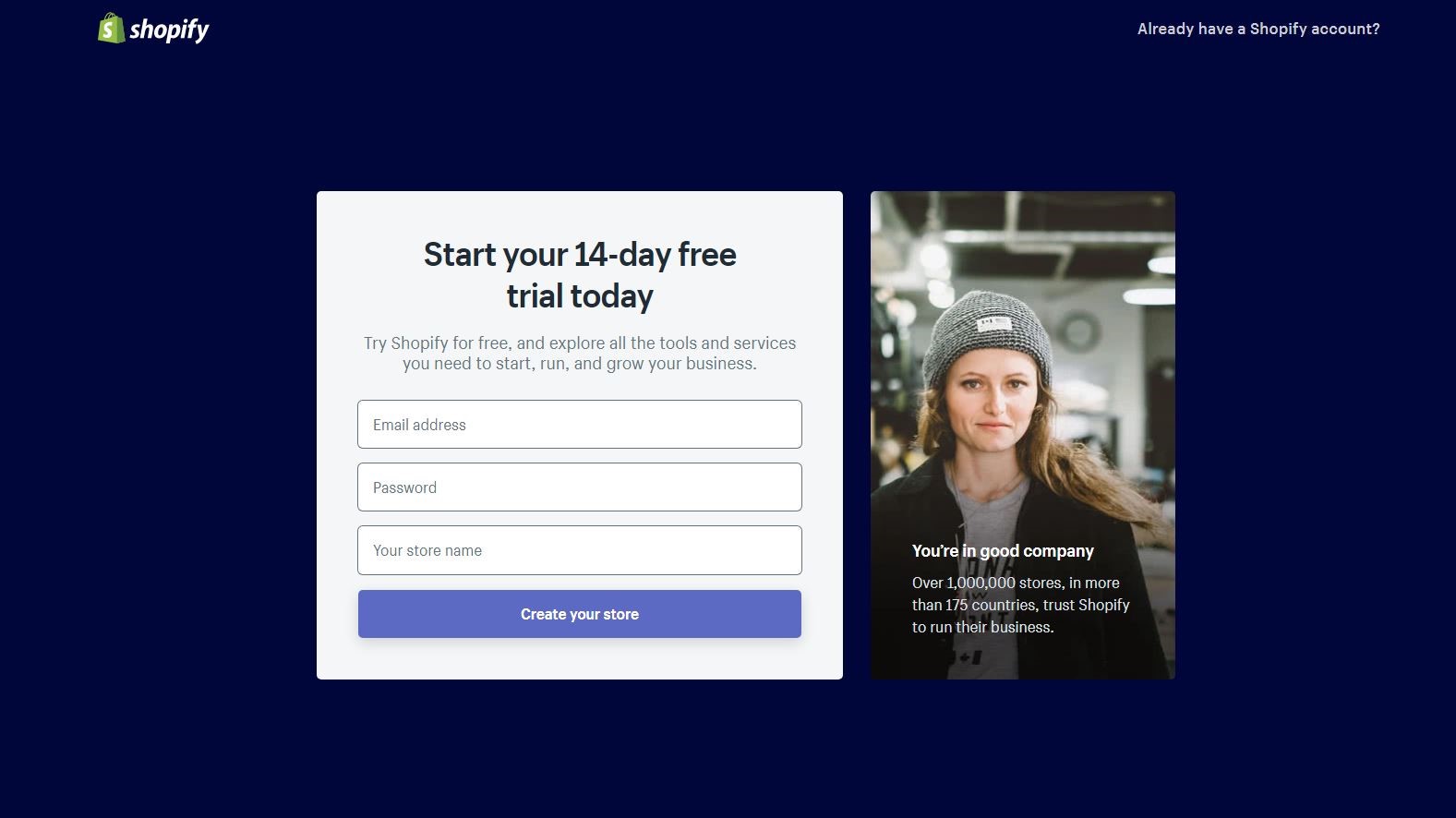
Getting started
Signing up with Shopify works much every bit you would expect: hand over your electronic mail address, name, concrete address and phone number, and the service logs yous into Shopify's web admin panel inside a few seconds.
The Shopify interface does its best to keep options to a minimum. A left-hand sidebar organises features into straightforward categories - Orders, Products, Customers, Analytics, Marketing, Discounts, Apps - while the Dashboard highlights how yous should get started (add products, and so customise your store). It's all very clean and elementary.
Ane trouble with this minimalist arroyo is information technology's not immediately obvious where you should expect to bear out a particular task. Fortunately, a well-designed search arrangement is on manus to point you in the right direction.
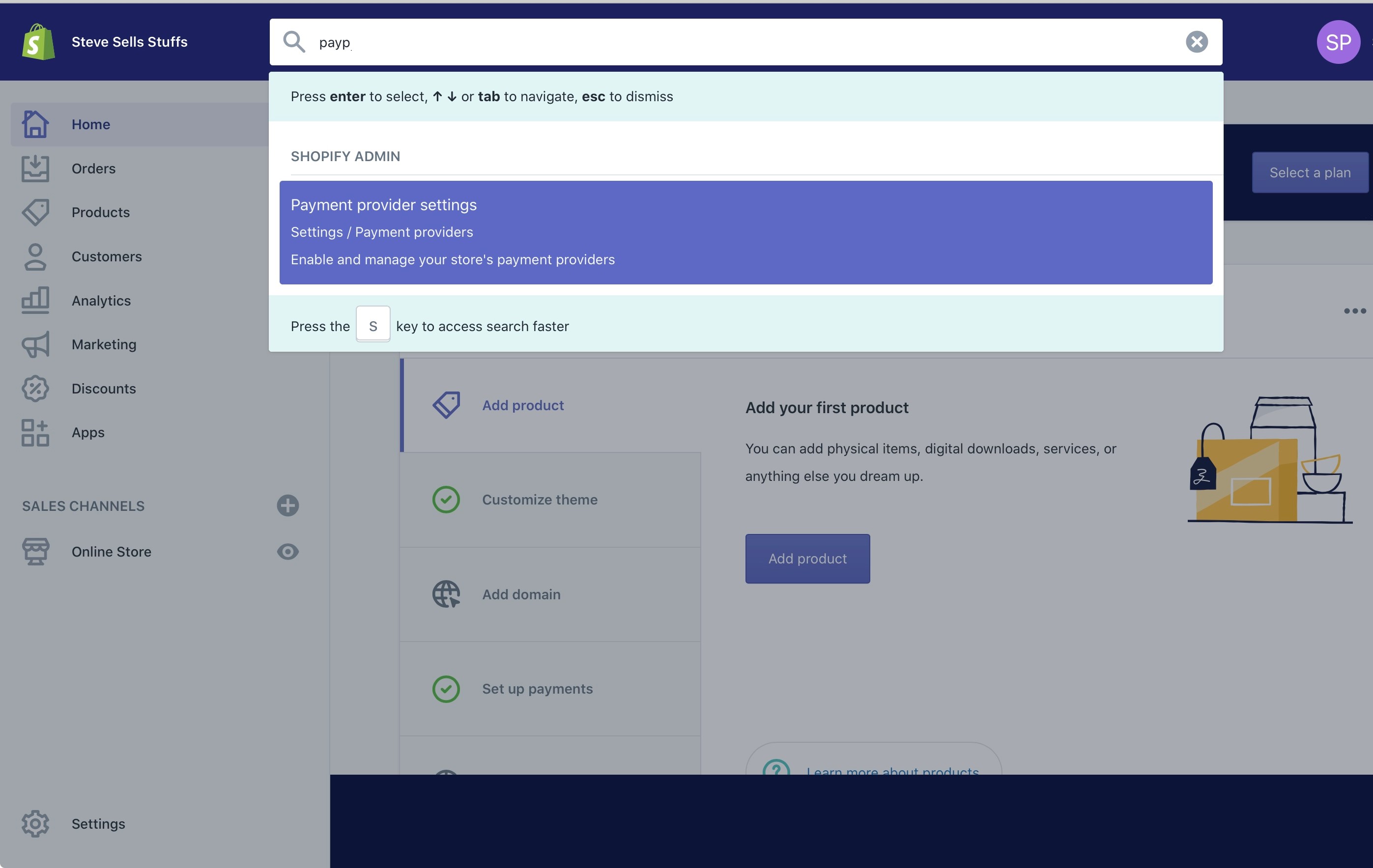
Start typing in the box and matching interface options are displayed and updated as you lot go. We began typing PayPal, for instance, but by the fourth dimension we reached 'PayP' the search box was displaying just 1 match, Payment Provider Settings. Tapping this took us to the relevant page in the Settings screen and we were able to check out our various options.
Shopify'southward dashboard design won't be for everyone. Competitors such as UltraCart and Volusion brand arguably improve apply of their dwelling house pages, for example displaying reports on store performance so they're always visible at a glance. Those sites tin too look cluttered and be more than intimidating to e-commerce newbies, though, and overall, Shopify'southward dashboard provides a comfy and straightforward place to work.
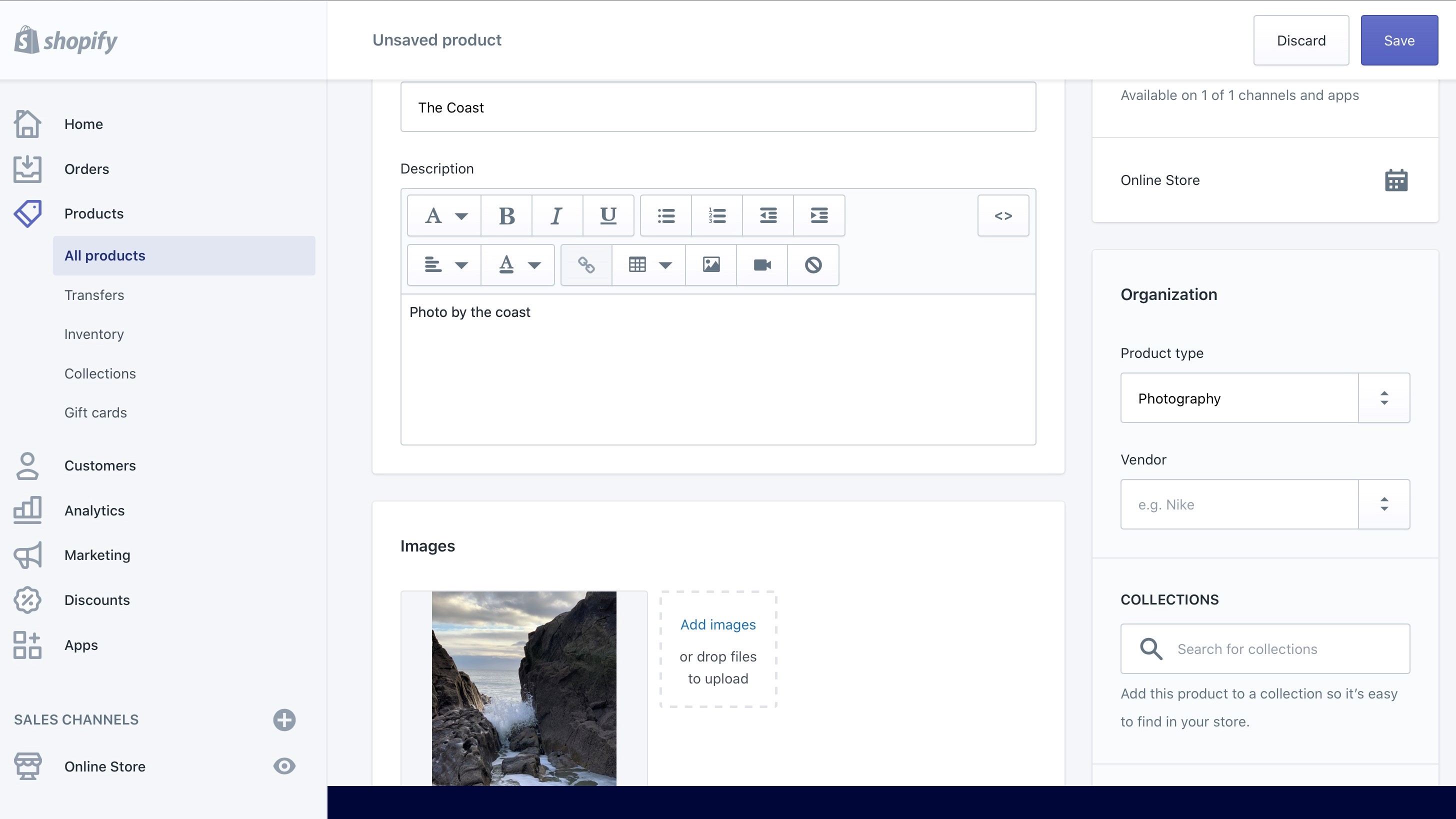
Creating your store
The Shopify dashboard suggests that adding a product is the 'first step to launching your store', and then we clicked the Add push to get started.
The website displayed a unproblematic Add Production form where we were able to manually enter production details. This covers all the essentials you would wait - description, images, linked videos, product classifications (blazon, vendor, collections, tags), variants, pricing, inventory details, shipping - merely little more.
Shopify product descriptions can include basic tables, for instance, while an Insert Video box enables inbound elementary embed codes. By contrast, BigCommerce (opens in new tab) offers almost as many table settings and options every bit Microsoft Word, and its Embed Media box offers fine-tuned command over HTML5 video and audio, Flash, generic IFrame and other objects.
Import features are minimal. Shopify only supports CSV files, the maximum file size is merely 15MB, and there's no control over the import process and no pick to link custom fields in the CSV to specific Shopify product attributes. This won't be an effect if the file is in the correct format, though, and Shopify does at to the lowest degree provide a sample file to assistance, as well as previewing the results of the import process before asking you to have it.
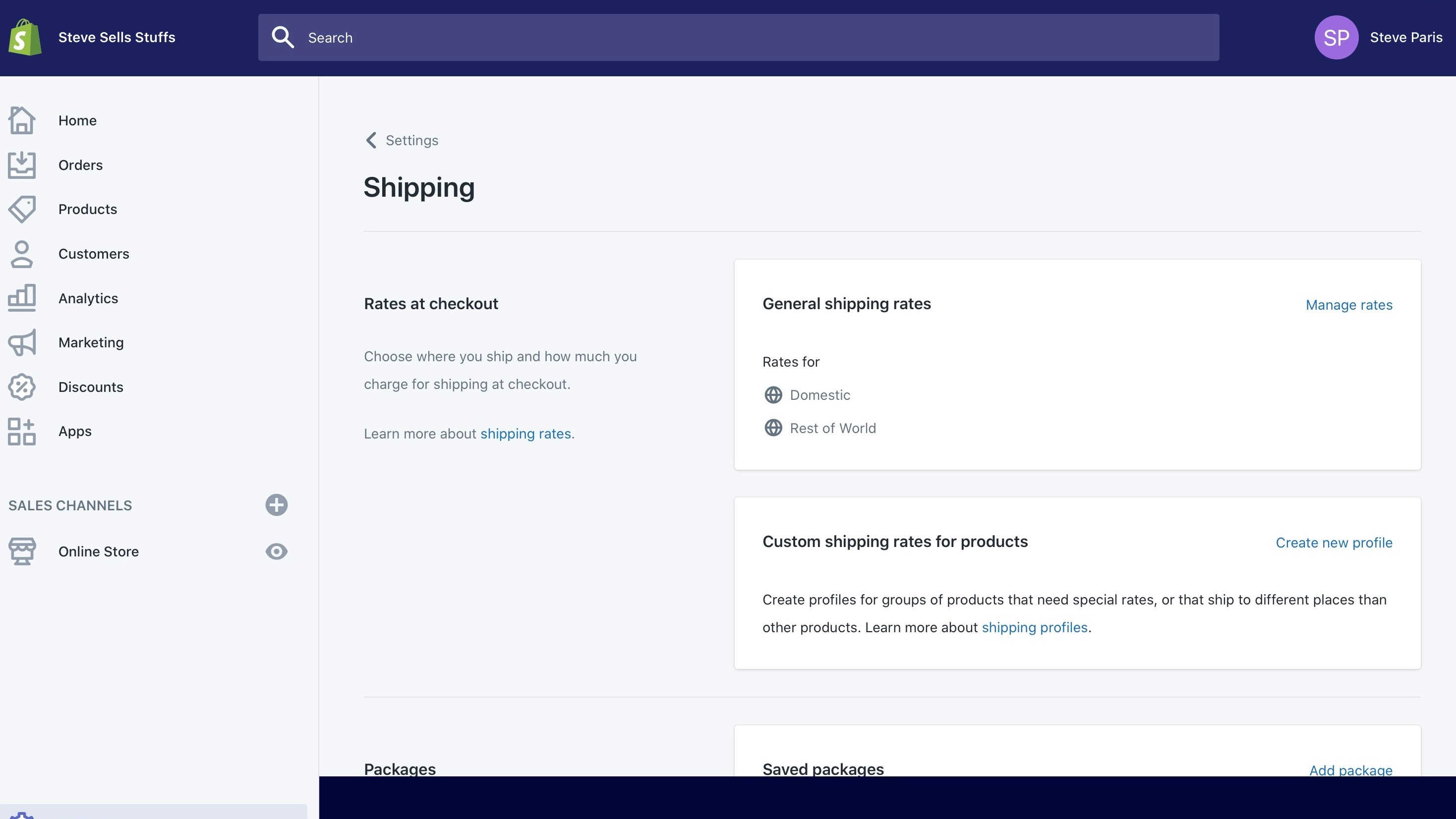
Aircraft support is amend, at least once you lot've realised where it is (cached in Settings rather than highlighted on the Dashboard every bit a must-do task if you're selling physical products).
The organisation gets you off to a quick get-go with some reasonable default settings: you're aircraft from the address you specified during setup, you're charging domestic shipping rates for your dwelling country and have a single aircraft zone to encompass the rest of the world. Fifty-fifty if this isn't authentic, it gives you lot some sample values to explore.
If you need more than, you're able to add equally many other aircraft zones as necessary. Each one can include your selection of countries, and your shipping rates can be calculated based on the price or weight of an order, or calculated from the rates taken from a specific shipping provider or app.
Although Shopify doesn't let for specifying the dimensions of a product, you tin can enter weight, and a Packages organization enables setting up dissimilar prices for the various package sizes and types you'll use to ship your products.
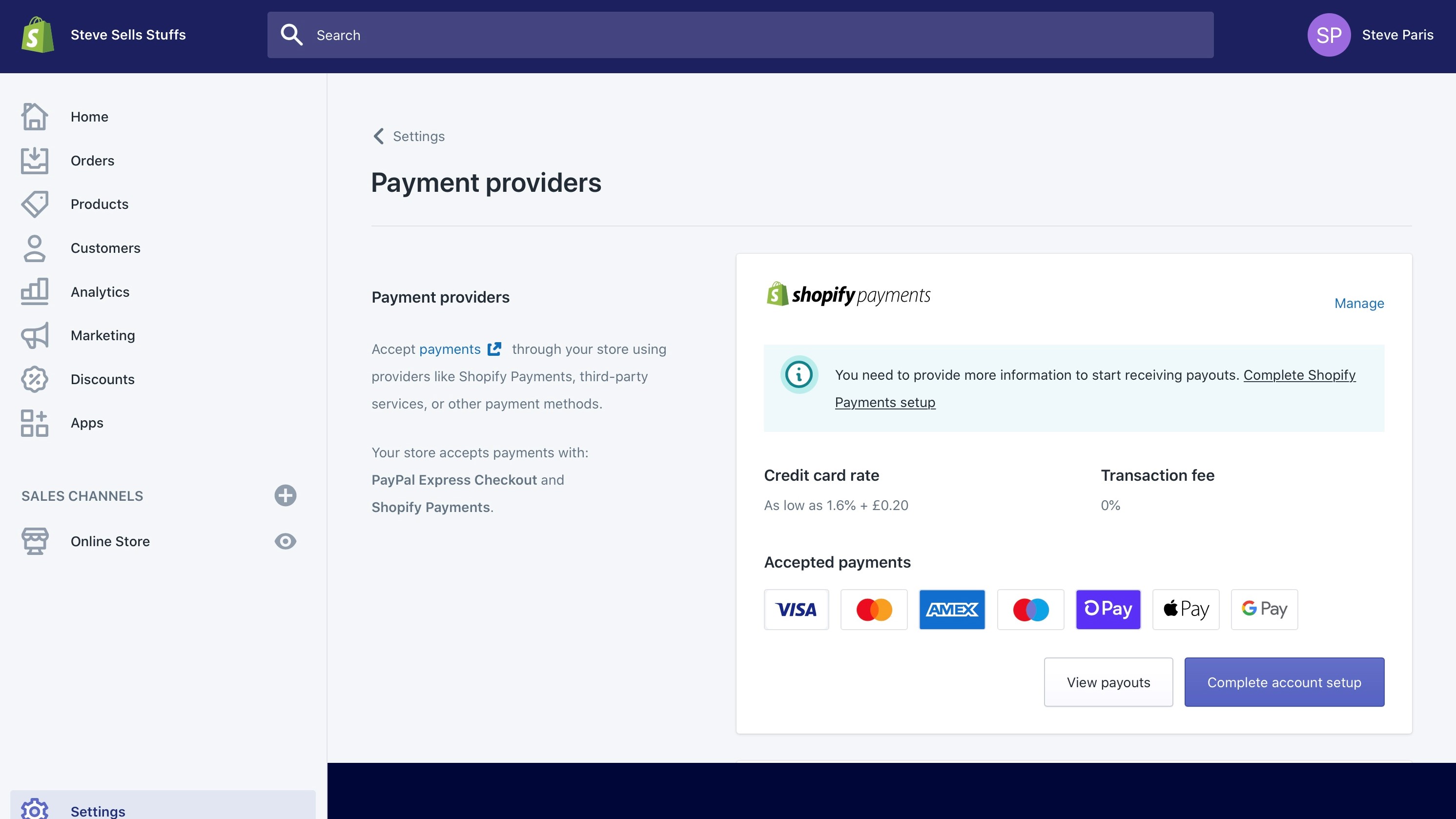
Setting upwards your payment providers is as straightforward. PayPal Express Checkout and Shopify Payments are enabled past default. The Stripe-powered Shopify Payments system enables taking payments via credit cards once you lot've provided a few more personal and financial details.
There's directly support for Amazon Pay and yous can also choose to take alternative payments, as well equally manual and other options (bank deposit, cash on delivery, money guild, more.) You can prepare up whatever you need with minimal hassle and exist taking orders almost immediately.
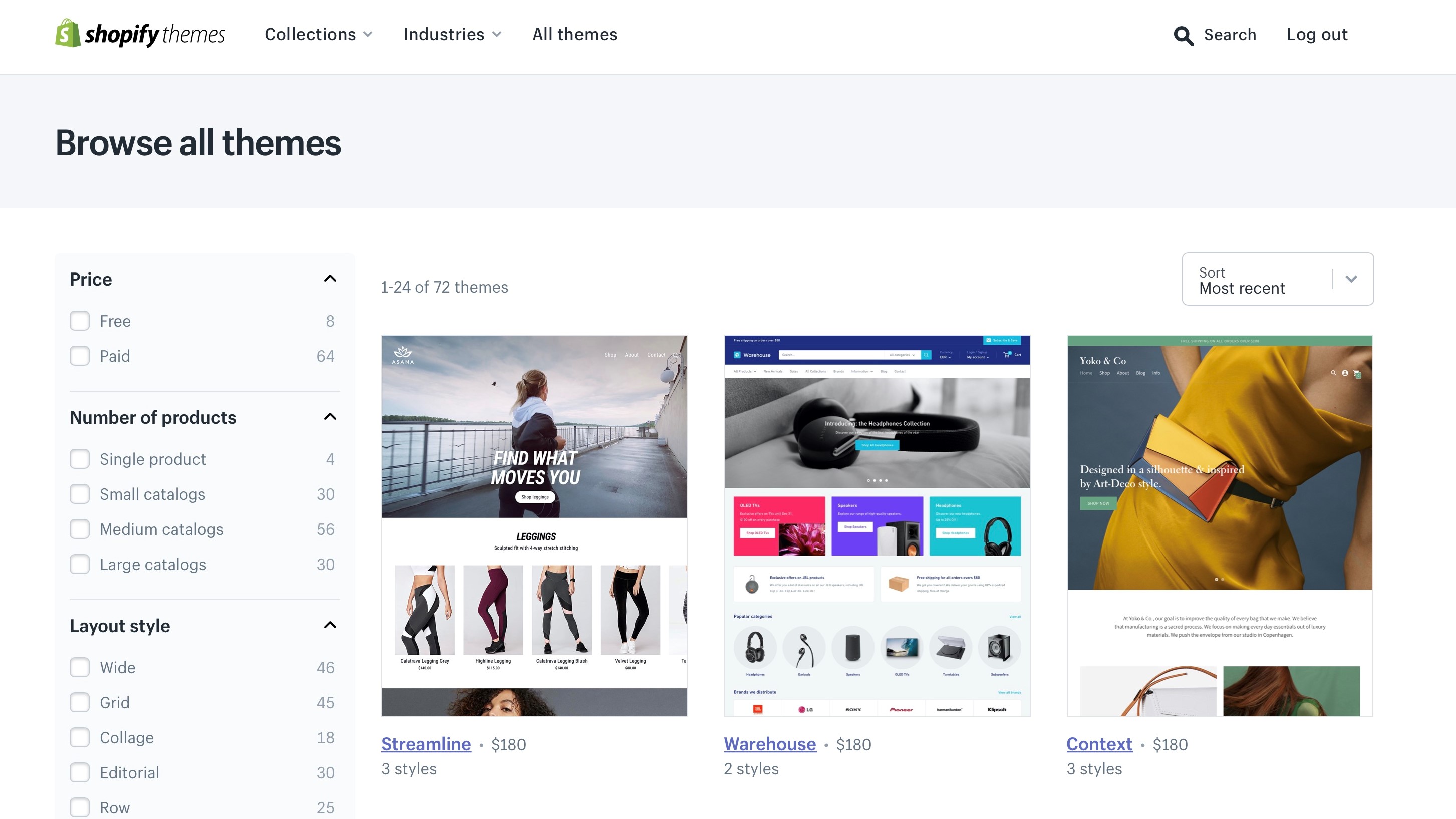
Running your business organization
Designing your site is a good start, only the real work comes in running the shop over the long term, so it's important that your chosen platform has all the necessary tools to assist.
One major Shopify highlight is its mobile app (iOS (opens in new tab) and Android (opens in new tab) are supported.)
Forth with its full general site direction and inventory tasks (adding and editing products, browsing reports), the app enables processing orders, issuing refunds, connecting with staff or contacting customers straight. This means there'southward no waiting effectually for customers if yous happen to be out of the office - you can give them the speedy service they expect, well-nigh wherever yous are.
Built-in analytics requite y'all an at-a-glance view of many of import business organisation stats: total orders and sales; tiptop products; online store sessions by location, device type and traffic source; sales past social and traffic source; and top referrers and landing pages. Individual reports give yous more detail, and a capable report generator gives you multiple written report templates and allows y'all to edit columns and add custom filters.
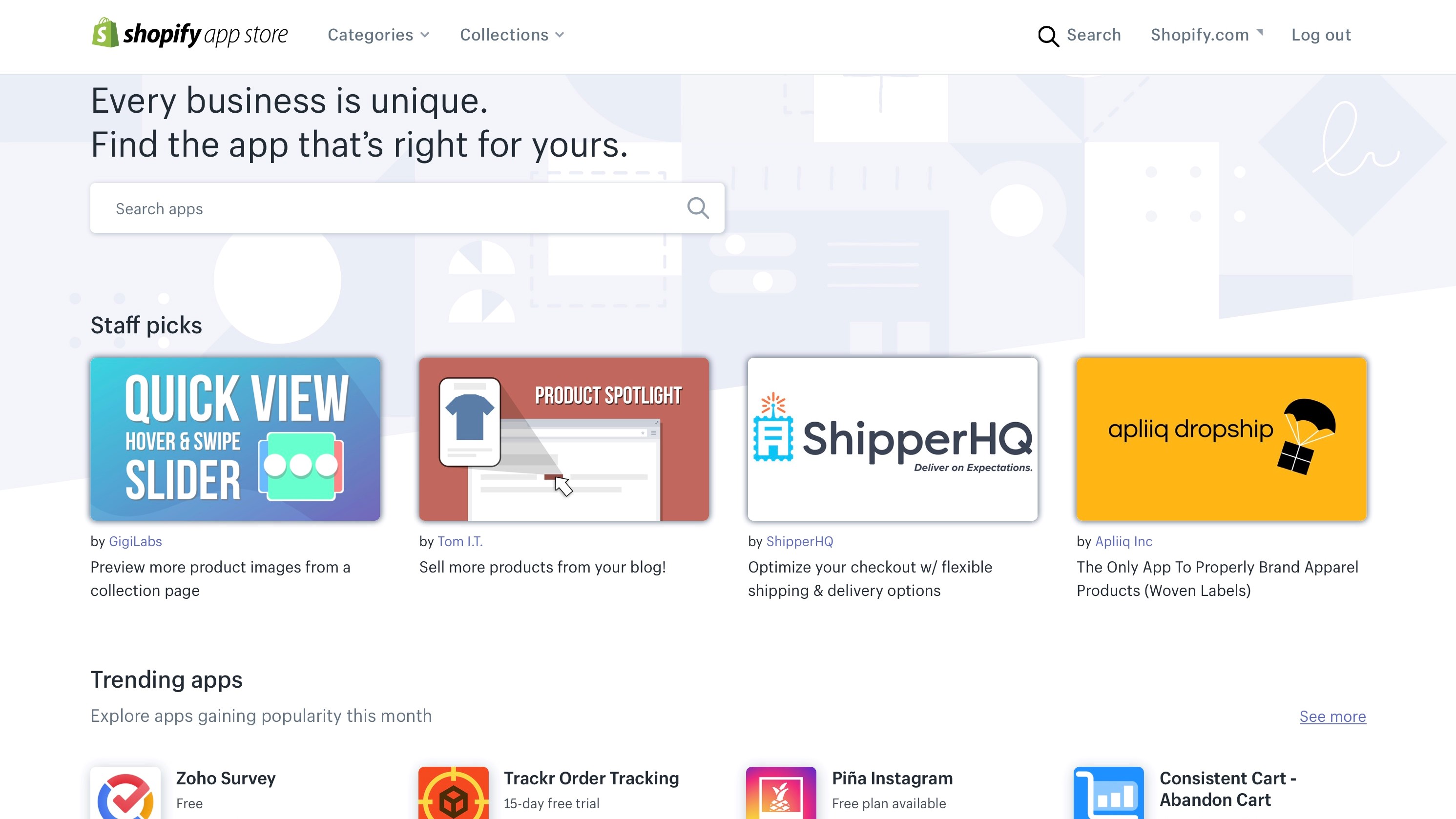
As we've seen, at that place'southward a lot of functionality here, only information technology doesn't just end with the standard Shopify features. An uncommonly busy App Store (opens in new tab) enables expanding its powers by integrating with an array of third-party services covering every aspect of your concern: marketing, sales, social media, aircraft, inventory, customer service, accounting, reporting and more than.
We don't have the infinite here to do justice to what's on offer, but to give y'all an idea, here are simply some of the things you can practice with Shopify'south free social media apps: enable signing up and logging in with multiple social network accounts; embed Instagram feeds in your store; automatically mail custom messages to social networks when you lot add together new products; collect reviews from Facebook, Twitter and Google+ and use them in your store; integrate messaging via Skype, Messenger, SMS and e-mail; promote best-selling products on your favourite sites, and the list goes on…
Many of these apps are free or include free options, and overall they profoundly aggrandize what the service can do. If you're browsing Shopify'southward website to detect out more than most the service, be sure to check out the App Store, too.
Concluding verdict
An first-class eastward-commerce platform, relatively easy to use and with a huge library of apps for integrating with other services. Beware the transaction fees if you lot don't utilise Shopify Payments, though.
- We've also highlighted the best web hosting services
Source: https://www.techradar.com/reviews/shopify
0 Response to "How to Upload Multiple Pictures to Shopify"
Post a Comment